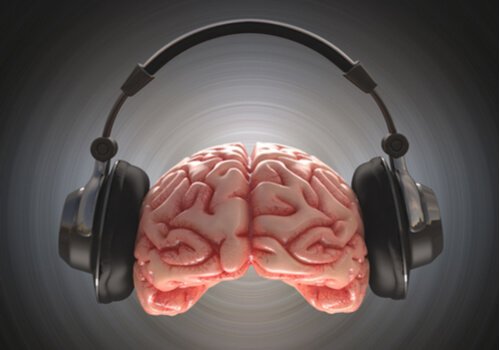How Movie Soundtracks Influence the Brain

Music is a universal language. It’s able to evoke memories, awaken feelings, and even help us during tough times, which is why it’s such an impactful element in the cinematographic world. Believe it or not, movie soundtracks influence our brain. Let’s be real: who doesn’t remember the soundtrack of their favorite movie? We’re sure you do.
For many people, it’s impossible to understand movies without music. Many old movies are still relevant to this day thanks to their remarkable soundtracks. Star Wars is a clear example of this, as well as Gone with the Wind or the ever-so-popular shower scene in the film Psycho.
Movie soundtracks have the power to stir up emotions. They can even make us smile, disturb us, or make us cry. This is because they influence our brain. Let’s delve deeper into this.
“Emotions of any kind can be evoked by melody and rhythm; therefore music has the power to form character.”
-Aristotle-
Music and the brain
Music is an exciting art form that’s capable of making us travel through time and relive moments. In fact, it’s always around us. But what happens in our brain when we listen to it?
According to some studies, music has played an important role in evolution. When researchers studied the brain’s response to music, they observed that music affected key areas related to control and movements. Consequently, they established that music helped our ancestors stay united and develop altruistic behaviors.
In 2015, some University of Helsinki researchers carried out a study and concluded that classical music affected the genes related to pleasure. In fact, those who listened to Mozart during the experiment showed more brain activity.
Musicologist and philosopher Julius Portnoy says that music can increase endorphin levels in the brain, which leads to a state of pleasure and relaxation. Listening to music can even influence metabolic rates, blood pressure, energy levels, and digestion.
Given that music activates many brain regions simultaneously, many mental health specialists resort to it to help their patients with some psychological disorders. This is known as music therapy. In music therapy, music is basically used as a tool to improve the patient’s health and overall well-being. In fact, studies have shown it can be useful in rehabilitation, welfare programs, and education.

How movie soundtracks influence the brain
Movie soundtracks are created by knowledgeable composers. These artists know exactly how music influences the brain and use music to captivate us. They use the power of music to trigger emotions. For example, composer Bernard Herrmann convinced Alfred Hitchcock of adding music to the shower scene in Psycho.
Movie soundtracks are extremely important because, in a way, they establish a relationship between what the viewers are seeing and their emotions during a movie.
Music plays a fundamental role in triggering fear and anguish. This goes for every genre, not just horror films. For example, in action movies, it acts like an impulse that makes our heart race and drowns us in suspense during some scenes. In mystery films, it can invite us to reflect on what’s going on. Overall, every movie genre uses music to its advantage.
Some studies have confirmed how movie soundtracks influence the brain. In 2010, the University of California published a study that showed that human beings and some wild animals manifest the same sensitivity to alarming sounds. Now, soundtrack composers use said sounds to trigger anguish, restlessness, or nervousness.

Infrasound used in films
Infrasound is low-frequency sound that human beings can’t perceive. However, it produces natural and emotional physical reactions.
Infrasound is used in movie soundtracks to support viewers’ emotional states. Through infrasound, composers are able to make viewers feel fear, sadness, and happiness, among other emotions. For example, the film Paranormal Activity used infrasound to ensure that the viewers experienced anguish and fear during some scenes.
In conclusion, movie soundtracks make the cinematographic experience much more real and interesting.
“Music is the shorthand of emotion. Emotions, which let themselves be described in words with such difficulty, are directly conveyed to man in music, and in that is its power and significance.”
-Leo Tolstoy-
Music is a universal language. It’s able to evoke memories, awaken feelings, and even help us during tough times, which is why it’s such an impactful element in the cinematographic world. Believe it or not, movie soundtracks influence our brain. Let’s be real: who doesn’t remember the soundtrack of their favorite movie? We’re sure you do.
For many people, it’s impossible to understand movies without music. Many old movies are still relevant to this day thanks to their remarkable soundtracks. Star Wars is a clear example of this, as well as Gone with the Wind or the ever-so-popular shower scene in the film Psycho.
Movie soundtracks have the power to stir up emotions. They can even make us smile, disturb us, or make us cry. This is because they influence our brain. Let’s delve deeper into this.
“Emotions of any kind can be evoked by melody and rhythm; therefore music has the power to form character.”
-Aristotle-
Music and the brain
Music is an exciting art form that’s capable of making us travel through time and relive moments. In fact, it’s always around us. But what happens in our brain when we listen to it?
According to some studies, music has played an important role in evolution. When researchers studied the brain’s response to music, they observed that music affected key areas related to control and movements. Consequently, they established that music helped our ancestors stay united and develop altruistic behaviors.
In 2015, some University of Helsinki researchers carried out a study and concluded that classical music affected the genes related to pleasure. In fact, those who listened to Mozart during the experiment showed more brain activity.
Musicologist and philosopher Julius Portnoy says that music can increase endorphin levels in the brain, which leads to a state of pleasure and relaxation. Listening to music can even influence metabolic rates, blood pressure, energy levels, and digestion.
Given that music activates many brain regions simultaneously, many mental health specialists resort to it to help their patients with some psychological disorders. This is known as music therapy. In music therapy, music is basically used as a tool to improve the patient’s health and overall well-being. In fact, studies have shown it can be useful in rehabilitation, welfare programs, and education.

How movie soundtracks influence the brain
Movie soundtracks are created by knowledgeable composers. These artists know exactly how music influences the brain and use music to captivate us. They use the power of music to trigger emotions. For example, composer Bernard Herrmann convinced Alfred Hitchcock of adding music to the shower scene in Psycho.
Movie soundtracks are extremely important because, in a way, they establish a relationship between what the viewers are seeing and their emotions during a movie.
Music plays a fundamental role in triggering fear and anguish. This goes for every genre, not just horror films. For example, in action movies, it acts like an impulse that makes our heart race and drowns us in suspense during some scenes. In mystery films, it can invite us to reflect on what’s going on. Overall, every movie genre uses music to its advantage.
Some studies have confirmed how movie soundtracks influence the brain. In 2010, the University of California published a study that showed that human beings and some wild animals manifest the same sensitivity to alarming sounds. Now, soundtrack composers use said sounds to trigger anguish, restlessness, or nervousness.

Infrasound used in films
Infrasound is low-frequency sound that human beings can’t perceive. However, it produces natural and emotional physical reactions.
Infrasound is used in movie soundtracks to support viewers’ emotional states. Through infrasound, composers are able to make viewers feel fear, sadness, and happiness, among other emotions. For example, the film Paranormal Activity used infrasound to ensure that the viewers experienced anguish and fear during some scenes.
In conclusion, movie soundtracks make the cinematographic experience much more real and interesting.
“Music is the shorthand of emotion. Emotions, which let themselves be described in words with such difficulty, are directly conveyed to man in music, and in that is its power and significance.”
-Leo Tolstoy-
All cited sources were thoroughly reviewed by our team to ensure their quality, reliability, currency, and validity. The bibliography of this article was considered reliable and of academic or scientific accuracy.
- Moreno, J. L. (2003). Psicología de la música y emoción musical. Educatio, (20-21), 213.
- Rebolledo, F. A. (2006). La musicoterapia como instrumento favorecedor de la plasticidad, el aprendizaje y la reorganización neurológica. Plasticidad y Restauración Neurológica, 5(1), 85-97.
- Soria-Urios, G., Duque, P., & García-Moreno, J. M. (2011). Música y cerebro: fundamentos neurocientíficos y trastornos musicales. Rev Neurol, 52(1), 45-55.
This text is provided for informational purposes only and does not replace consultation with a professional. If in doubt, consult your specialist.







